Home
About us
News
Services
Guide Dogs
Vision Loss Resources
Discovery Centre
Conferences & Courses
Shop
Support Us
Contact Us
The Senses
Hearing
Smell
Touch
Helen Keller
Making Measurements
Here Is What We Would Like You To Do.
Points to Remember
Hearing
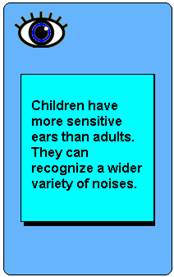
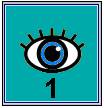 When a person’s sense of sight is damaged or lost the other four senses take on a new importance. Hearing, touch and smell, particularly can provide much of the information a vision impaired person needs to help them make sense of their surroundings.
When a person’s sense of sight is damaged or lost the other four senses take on a new importance. Hearing, touch and smell, particularly can provide much of the information a vision impaired person needs to help them make sense of their surroundings.
In the absence of sight, hearing can be very important in replacing a lot of information that the eyes provide. To get an idea of what you can “see” with your “ears”, click on “Eye Con”1 and take the sound test and see if you can tell your partner what happened in the “SOUND SCENARIO”. Because you can’t see what is happening, you will have to listen very carefully.
Back to Top
Smell
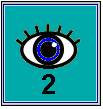 Although not as important as your sense of hearing, your sense of smell, in the absence of your sight, can give you important clues to help you make sense of the world around you.
Although not as important as your sense of hearing, your sense of smell, in the absence of your sight, can give you important clues to help you make sense of the world around you.
Think about this for a moment; Mum goes to a lot of trouble to prepare you your favourite meal, normally the sight of the food plays a part in your enjoying your food. Imagine how it would be if you could not see the food before you put it into your mouth. Obviously then, smelling food before it reaches your mouth would give you a clue as to the type of food that you were about to eat you are not likely to want to feel it.
Food of course isn’t the only concern a vision impaired person has. While we would never recommend smelling chemicals closely, a blind person may need to smell the contents of different containers around the house to make sure they are not using something dangerous by mistake. Imagine using the fly spray instead of spray on cooking oil to oil your frying pan before throwing on a juicy steak.
Click on “Eye Con” 2 and ask your teacher if you and your class can complete the “Smelly Worksheet” so that you can gain an appreciation of how your sense of smell can help you to identify things in the absence of sight.
Touch
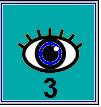
 The last of the senses we will consider here is the sense of touch. Without your sight, touch is the most important sense to help you find your way around and identify objects. Because your sense of touch is so important, it helps if you understand something of how this sense works. Click on “Eye Con” 3 and visit the © Thinkquest website 2007, read the article which explains how your sense of touch allows you to feel.
The last of the senses we will consider here is the sense of touch. Without your sight, touch is the most important sense to help you find your way around and identify objects. Because your sense of touch is so important, it helps if you understand something of how this sense works. Click on “Eye Con” 3 and visit the © Thinkquest website 2007, read the article which explains how your sense of touch allows you to feel.
Without your sense of sight, finding your way around and appreciating your surroundings becomes a much more complex task. I hope that you have learned to appreciate from these activities that your other senses can help fill in the blanks but your sense of sight is a precious gift you should take every care to protect.
Helen Keller

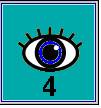
Do you know whose picture this is? Click on “Eye Con” 4 and visit the © 2007 Braille Bug Museum read about this amazing person who at 18 months of age lost both her sight and hearing. Imagine how difficult her life might have been with just her senses of touch, smell and taste to help her learn to communicate and interpret the world around her. Her story is an amazing example of courage and determination we hope you enjoy it.
© 2007 Braille Bug Museum
Making Measurement
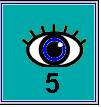 This section of the learning journey focuses on the important skill of navigation for vision impaired people and will help you understand the complex task of moving around when you can’t see well or at all.
This section of the learning journey focuses on the important skill of navigation for vision impaired people and will help you understand the complex task of moving around when you can’t see well or at all.
Not all vision impaired people have access to a Guide Dog, and of course, even those that do have to move around sometimes without the aid of the dog sometimes. When you can’t see, as we have already discussed, people are left to rely on their other senses.
Measuring distances is important when moving around but of course vision impaired people can not estimate distance by sight as you and I do so how do you imagine they do this.
Now here are some simple examples of when distance counts.
- I want to turn the TV off. I know where it is because I can hear it. But how close is it. If I guess wrong I am going to bump into it.
- I decide to go and collect the mail from the mail box. I know how to get to it; down the hall out the front door down the path and to the left of the gate but how far is it from the door to the path. I do not want to stumble into the fence.
- What about walking through a door or opening? How does the blind or vision impaired person know how wide is it?
- How would a blind or vision impaired person get around in your classroom.
Here is what we would like you to do.
First brainstorm ways that you could estimate the distances needed to navigate the first two scenarios listed above. Talk about your suggestions for making the necessary measurements with your class.
Now, in small groups tackle the following tasks in your own classroom. You will need some blindfolds and a lot of patience. Use the most appropriate methods discussed, to navigate the following.
Point to Remember
Start each the exercise from your desk.
Work out how you are going to estimate the distance before you try the exercise with your blindfold on.
- Place a piece of waste paper in the class bin.
- Close a designated classroom window
- Take an exercise book and place it on your teacher’s desk for marking
- Find the classroom door
- NOW TRY SOME OF YOUR OWN
Can you improve your results by trying different measuring techniques?



